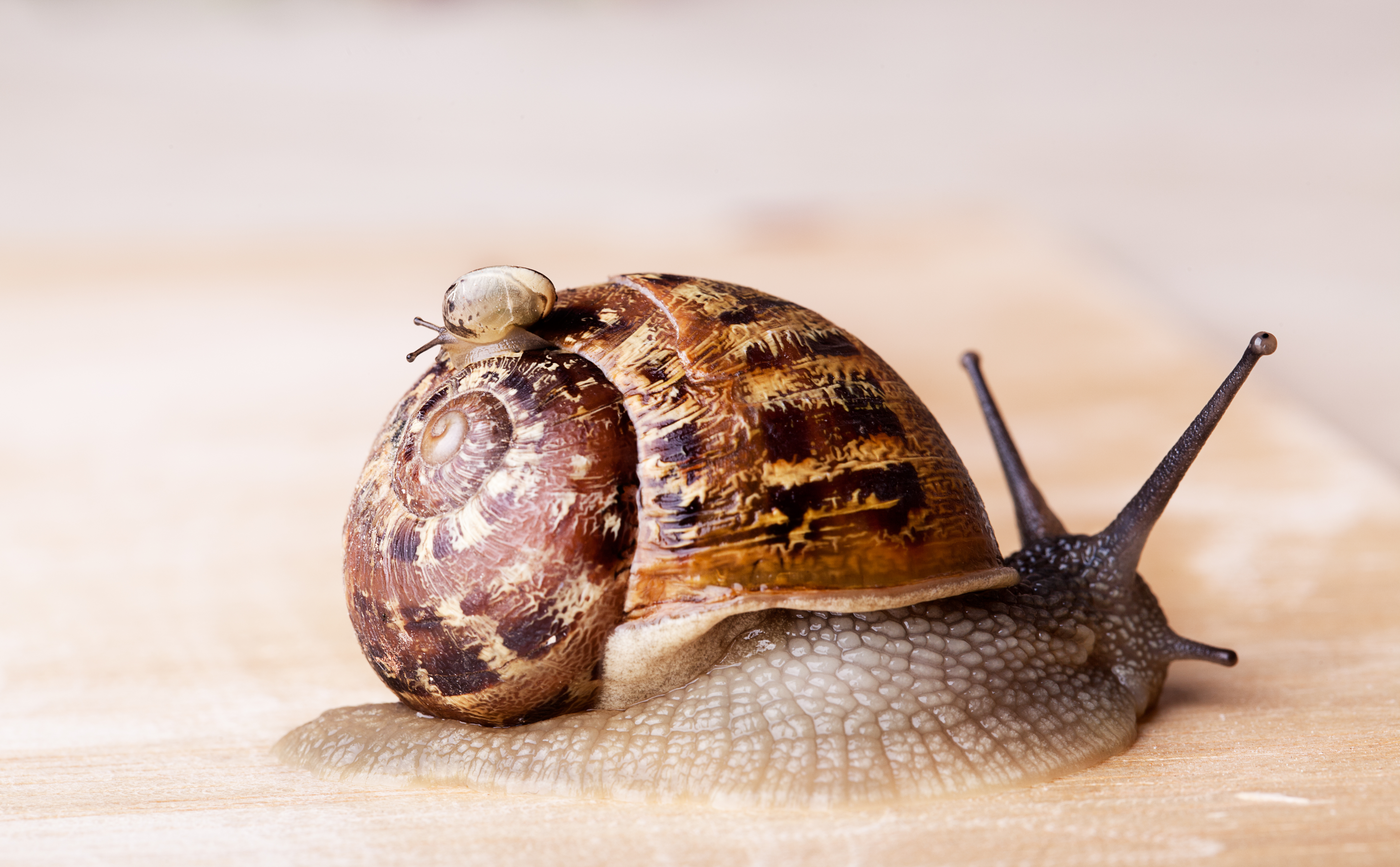European Brown Garden snail
(Cornu aspersum)

Description
Cornu aspersum (syn. Cryptomphalus aspersus), known by the common name garden snail, is a species of land snail in the family Helicidae, which includes some of the most familiar land snails. Of all terrestrial molluscs, this species may well be the most widely known. It was classified under the name Helix aspersa for over two centuries, but the prevailing classification now places it in the genus Cornu. The snail is relished as a food item in some areas, but it is also widely regarded as a pest in gardens and in agriculture, especially in regions where it has been introduced accidentally, and where snails are not usually considered to be a menu item. The adult bears a hard, thin calcareous shell 25-40 millimetres (1-1+5⁄8 in) in diameter and 25-35 millimetres (1-1+3⁄8 in) high, with four or five whorls. The shell is variable in coloring and shade of color, but generally it has a reticulated pattern of dark brown, brownish-golden, or chestnut with yellow stripes, flecks, or streaks (characteristically interrupted brown colour bands). The aperture is large and characteristically oblique, its margin in adults is whitish and reflected. The body is soft and slimy, brownish-grey, and able to be retracted entirely into the shell, which the animal does when inactive or threatened. When injured or badly irritated the snail produces a defensive froth of mucus that might repel some enemies or overwhelm aggressive small ants and the like. It has no operculum; during dry or cold weather it seals the aperture of the shell with a thin membrane of dried mucus; the term for such a membrane is epiphragm. The epiphragm helps the snail retain moisture and protects it from small predators such as some ants. The snail's quiescent periods during heat and drought are known as aestivation; its quiescence during winter is known as overwintering. When overwintering, Cornu aspersum avoids the formation of ice in its tissues by altering the osmotic components of its blood (or haemolymph); this permits it to survive temperatures as low as -5 °C (23 °F). During aestivation, the mantle collar has the ability to change its permeability to water. The snail also has an osmoregulatory mechanism that prevents excessive absorption of water during hibernation. These mechanisms allow Cornu aspersum to avoid either fatal desiccation or hydration during months of either kind of quiescence.
Taxonomic tree:







